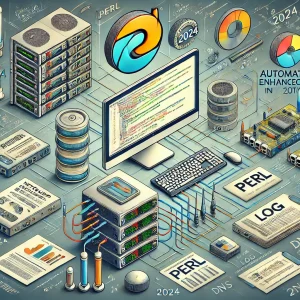
In recent years, the landscape of front-end development has undergone significant changes, with TypeScript emerging as a transformative force. As we navigate through 2024, it’s evident that TypeScript is reshaping the way developers approach front-end projects, bringing a plethora of benefits that enhance both development efficiency and application quality. In this blog, we’ll explore how TypeScript is transforming front-end development in 2024, delving into its features, advantages, and the reasons behind its widespread adoption.
What is TypeScript?
TypeScript is an open-source programming language developed by Microsoft. It is a superset of JavaScript, which means it builds upon the foundation of JavaScript by adding static typing and other powerful features. Introduced in 2012, TypeScript has steadily gained popularity among developers due to its ability to catch errors at compile time, improve code readability, and provide better tooling support. Understanding how TypeScript is transforming front-end development in 2024 requires a look into its evolution and the value it brings to modern web development.
The Evolution of Front-End Development
Front-end development has evolved significantly over the years, moving from simple HTML and CSS to complex single-page applications (SPAs) built with frameworks like React, Angular, and Vue.js. With this evolution, the need for more robust and maintainable codebases has become apparent. JavaScript, while versatile, has its limitations, particularly when it comes to handling large-scale applications. This is where TypeScript comes into play, offering a more structured and scalable approach to front-end development. It’s crucial to see how TypeScript is transforming front-end development in 2024 by addressing these limitations.
Key Features of TypeScript
To understand how TypeScript is transforming front-end development in 2024, it’s essential to highlight its key features:
- Static Typing: One of the most significant advantages of TypeScript is its static typing system. By explicitly defining types for variables, function parameters, and return values, developers can catch type-related errors during the development phase, reducing the likelihood of runtime errors.
- Type Inference: TypeScript’s type inference capabilities allow it to deduce types automatically, reducing the need for explicit type annotations in many cases. This feature strikes a balance between the flexibility of JavaScript and the type safety of TypeScript.
- Enhanced Tooling: TypeScript’s integration with modern IDEs and code editors, such as Visual Studio Code, provides developers with powerful features like autocompletion, real-time error checking, and intelligent code refactoring. These tools enhance productivity and streamline the development process.
- Interfaces and Type Aliases: TypeScript allows developers to define interfaces and type aliases, enabling the creation of more expressive and reusable code. Interfaces define the shape of objects, while type aliases provide a way to create custom types for better code readability.
- Namespaces and Modules: TypeScript supports namespaces and modules, allowing developers to organize and encapsulate their code effectively. This modular approach facilitates code reuse and maintainability, especially in large-scale applications.
- Compatibility with JavaScript: Since TypeScript is a superset of JavaScript, it is fully compatible with existing JavaScript code. This means developers can gradually migrate their projects to TypeScript without having to rewrite everything from scratch.
How TypeScript is Transforming Front-End Development in 2024
Improved Code Quality and Maintainability
One of the primary ways how TypeScript is transforming front-end development in 2024 is by improving code quality and maintainability. The static typing system ensures that developers catch type-related errors early in the development process, reducing the number of bugs that make it to production. This leads to more stable and reliable applications, which are easier to maintain and extend over time.
Enhanced Developer Productivity
TypeScript’s powerful tooling and autocompletion features significantly enhance developer productivity. With features like real-time error checking and intelligent code suggestions, developers can write code faster and with greater confidence. The ability to refactor code safely and efficiently further contributes to a smoother development experience. This is a clear example of how TypeScript is transforming front-end development in 2024.
Better Collaboration and Onboarding
In large development teams, maintaining consistency and readability across the codebase is crucial. TypeScript’s explicit type definitions and interfaces make it easier for developers to understand each other’s code, facilitating better collaboration. Additionally, new team members can onboard more quickly, as the clear type annotations provide valuable documentation and context. Understanding how TypeScript is transforming front-end development in 2024 also means recognizing its impact on team dynamics and efficiency.
Adoption of Modern JavaScript Features
TypeScript continuously evolves to support the latest ECMAScript standards, ensuring that developers can take advantage of modern JavaScript features. This includes features like async/await, destructuring, and optional chaining, which simplify code and enhance its readability. By using TypeScript, developers can stay up-to-date with the latest advancements in the JavaScript ecosystem. This ongoing evolution highlights how TypeScript is transforming front-end development in 2024.
Large-Scale Application Development
As front-end applications become more complex and feature-rich, managing large codebases becomes increasingly challenging. TypeScript’s modularity, namespaces, and strong typing system make it easier to build and maintain large-scale applications. Developers can break down their code into smaller, manageable modules, improving code organization and reducing the risk of introducing bugs. This modular approach is a testament to how TypeScript is transforming front-end development in 2024.
Strong Ecosystem and Community Support
TypeScript has a thriving ecosystem and a supportive community, which contributes to its rapid adoption. Popular front-end frameworks like Angular have embraced TypeScript as their primary language, while React and Vue.js offer excellent TypeScript support. The availability of type definitions for third-party libraries through DefinitelyTyped further extends TypeScript’s capabilities. This robust ecosystem illustrates how TypeScript is transforming front-end development in 2024.
Future-Proofing Front-End Development
By adopting TypeScript, developers are future-proofing their front-end projects. The strong typing system and enhanced tooling provide a solid foundation for building scalable and maintainable applications. As the web development landscape continues to evolve, TypeScript’s ability to adapt to new standards and practices ensures that developers can stay ahead of the curve. This adaptability is key to understanding how TypeScript is transforming front-end development in 2024.
Case Studies: TypeScript in Action
Airbnb
Airbnb, a global leader in the hospitality industry, has adopted TypeScript to improve the quality and reliability of its front-end codebase. By leveraging TypeScript’s static typing and enhanced tooling, Airbnb’s development team has reduced the number of bugs and improved code maintainability. This has resulted in a more stable and performant user experience for millions of users worldwide. This case study exemplifies how TypeScript is transforming front-end development in 2024.
Slack
Slack, a popular communication platform, has also embraced TypeScript to enhance its front-end development process. The use of TypeScript has enabled Slack’s developers to catch errors early and ensure consistent code quality across their large codebase. This has contributed to the platform’s robustness and reliability, even as it continues to evolve and expand its feature set. This real-world application further demonstrates how TypeScript is transforming front-end development in 2024.
Getting Started with TypeScript
For developers looking to get started with TypeScript, the process is straightforward. Here are some steps to help you begin your TypeScript journey and see firsthand how TypeScript is transforming front-end development in 2024:
- Install TypeScript: You can install TypeScript globally using npm (Node Package Manager) with the following command:bashCopy code
npm install -g typescript - Set Up Your Project: Initialize a new TypeScript project by creating a
tsconfig.jsonfile. This file contains configuration options for the TypeScript compiler.bashCopy codetsc --init - Write TypeScript Code: Start writing TypeScript code by creating files with the
.tsextension. Use TypeScript’s features, such as type annotations and interfaces, to enhance your code. - Compile TypeScript: Compile your TypeScript code to JavaScript using the TypeScript compiler (tsc). The compiled JavaScript files can then be executed in the browser or on a Node.js server.bashCopy code
tsc - Integrate with Build Tools: Integrate TypeScript with your build tools, such as Webpack or Babel, to streamline your development workflow and enable features like hot module replacement.
Conclusion
In 2024, TypeScript is undoubtedly transforming front-end development by offering a robust and scalable alternative to JavaScript. Its static typing system, enhanced tooling, and compatibility with modern JavaScript features make it an invaluable tool for developers building complex web applications. By improving code quality, enhancing productivity, and facilitating better collaboration, TypeScript is poised to continue its rise as a dominant force in the front-end development landscape.
As we look ahead, it’s clear that TypeScript’s impact on front-end development will only grow stronger, driving innovation and setting new standards for the industry. For developers seeking to stay ahead of the curve and build future-proof applications, embracing TypeScript is a strategic move that promises to deliver substantial long-term benefits.
By understanding how TypeScript is transforming front-end development in 2024, developers can leverage its powerful features to create more reliable, maintainable, and scalable applications, ultimately pushing the boundaries of what is possible in the world of web development.





